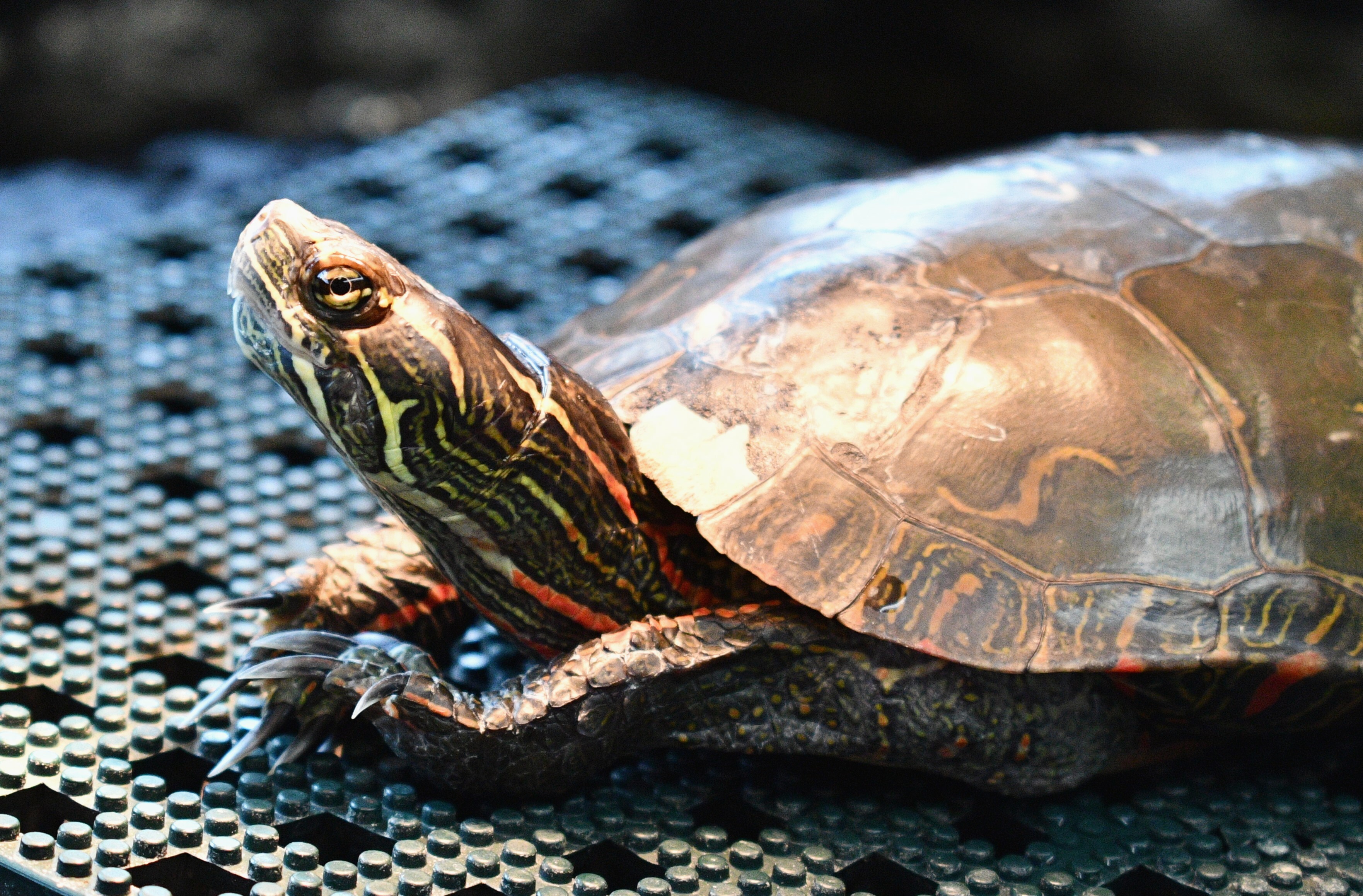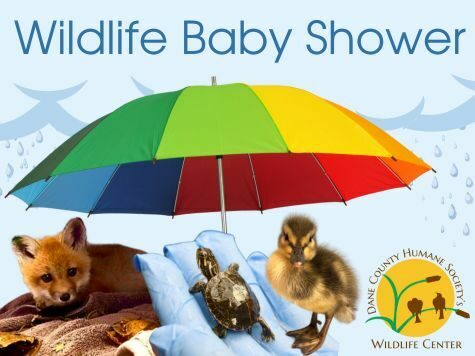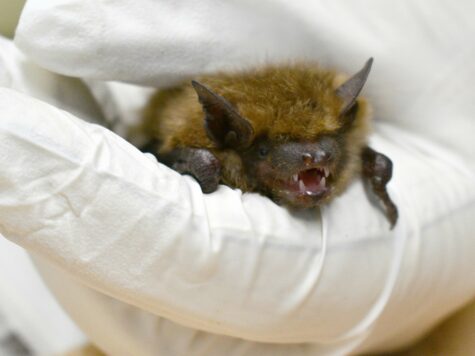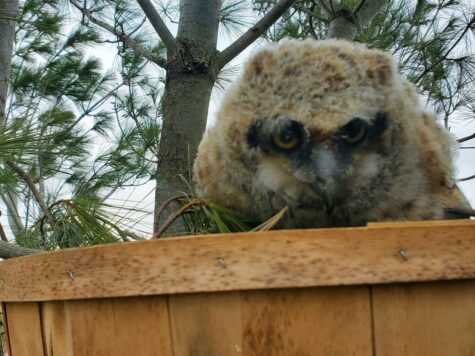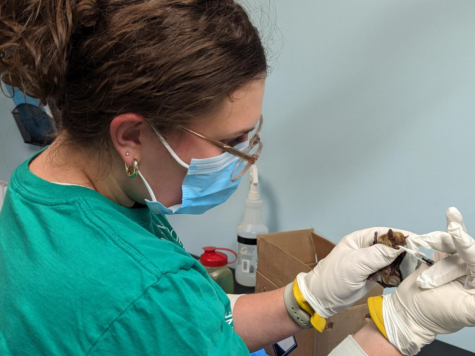The variety of species and number of admissions seen by wildlife rehabilitators ebb and flow throughout the year, and it is hard to pick a favorite patient to highlight. Each animal at Dane County Humane Society’s (DCHS’s) Wildlife Center has its own unique story and personality, and we just want to share them all! So, we’ve decided to highlight an entire area of wildlife care: reptiles and amphibians.
Since this past winter, DCHS’s Wildlife Center has been housing five patients in our Reptile Recovery Center (the RRC). Two Western Painted Turtles, an Eastern Milk Snake, a Northern Green Frog, and a Gray Treefrog are housed in their own enclosures and provided with warmth, food, and fresh water by our dedicated team of interns and volunteers. Staff perform weekly evaluations to monitor their health, and all of them will stay in rehabilitation until spring when it is warm enough to release them back into the environment.
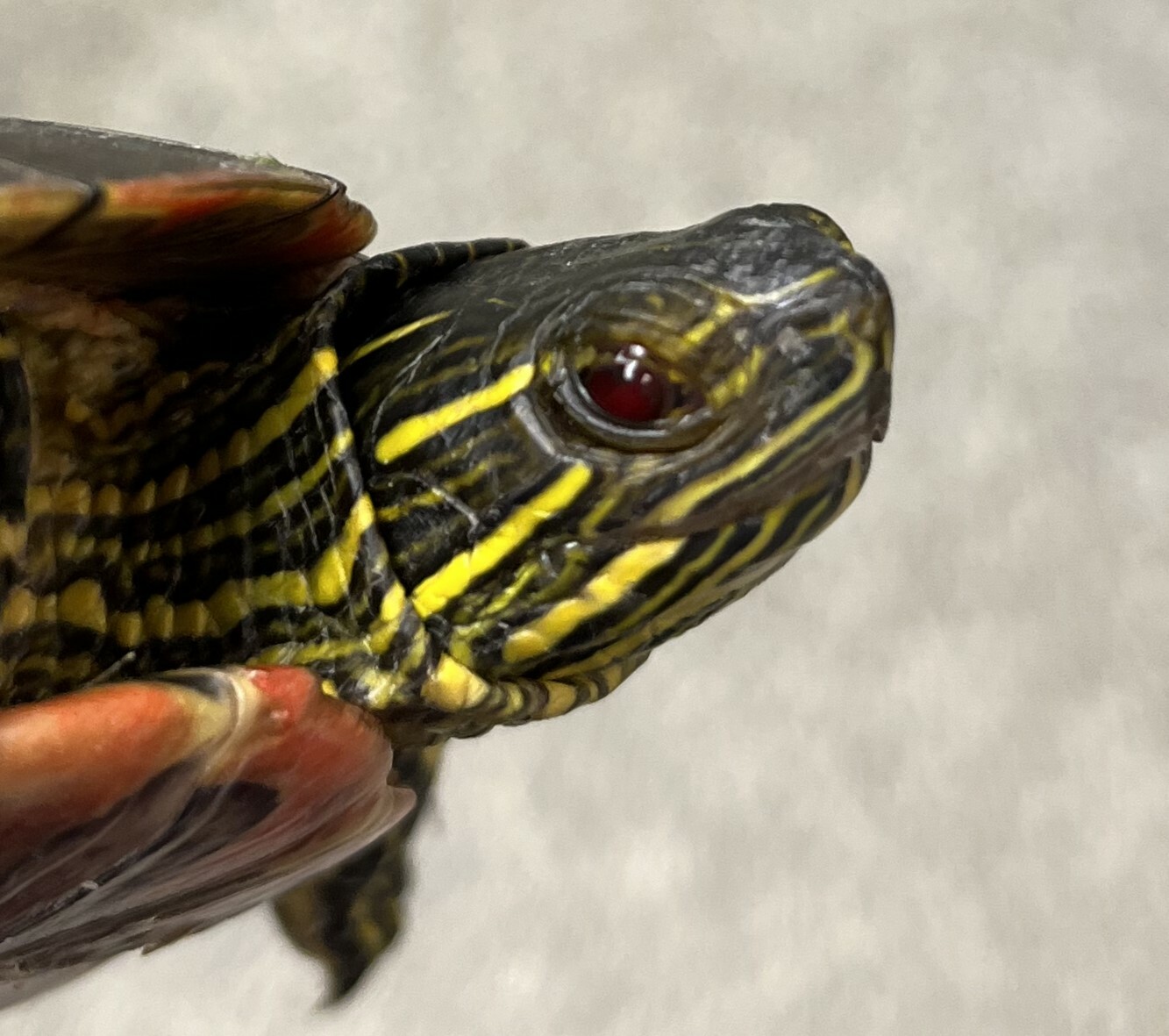
Western Painted Turtles #23-0369 and #23-1654 were admitted last summer after they were found hit by cars on the roadside. One came from the La Crosse area and the other from Lafayette County. DCHS’s Wildlife Center primarily services reptiles and amphibians from the southern half of Wisconsin, and the distance that the public had to drive to get these turtles into rehabilitation illustrates just how few people are licensed to work with them.
One turtle is an adult female that is still recovering from ocular trauma, but fractures to her shell and a necessary surgical amputation to her right humerus at the end of fall had successfully healed. The other turtle is an adult male that was admitted with a fracture to the caudal end of its carapace, or the top half of the shell. The fracture had crossed over the midline where the spine is fused to the shell, and that kind of injury is a concern for diminished function to the central nervous system. However, this turtle was bright, alert, and mobile, making him a good candidate for rehabilitation.
Turtles are slow to recover and would typically enter a period of brumation, which is like hibernation, during the winter. Instead, they are kept at DCHS’s Wildlife Center in a spring-like habitat with filtrated water, heat, and natural light so that they can continue to heal. Both turtles spend ample time basking and swimming during the day, and they seem to enjoy the fresh food that is offered by our team during the week. One of them is a volunteer-favorite because of its adorable leg-stretch pose while soaking up the sunshine.
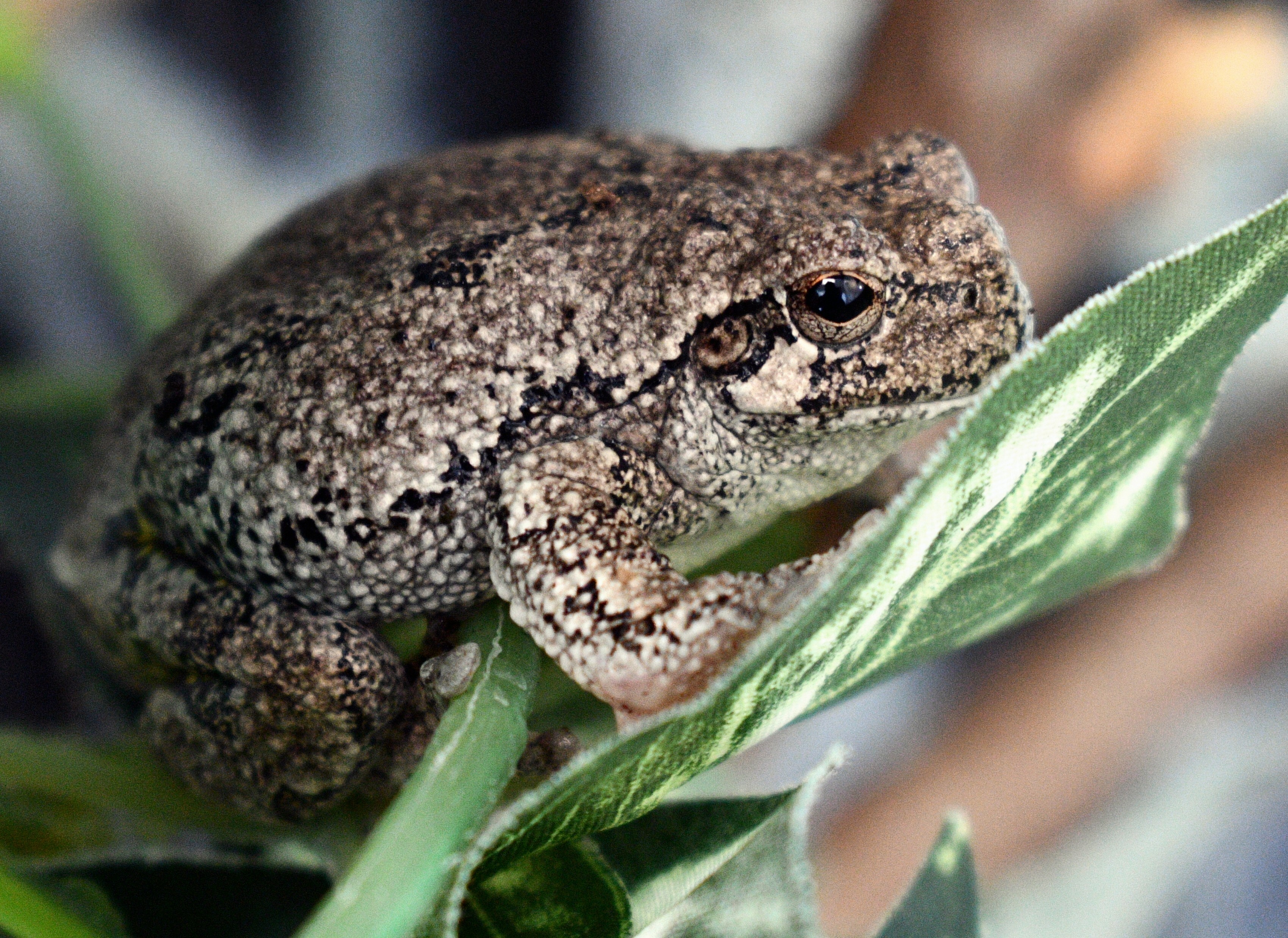
Gray Treefrog #23-2017 was found buried in the soil of a potted plant that had been brought indoors to prevent it from freezing. The plant was originally moved inside in September, but the frog was found later in mid-December! DCHS’s Wildlife Center was able to help triage the case and offer this frog an excellent temporary home in the RRC for the winter. Our team created a bioactive enclosure with moisture, fresh food, and water – an all-natural type of environment. The frog also came in with a small injury to its forehead and nose that was successfully treated by our wildlife staff, guided by volunteer veterinarians from UW-Madison, and it has since recovered nicely.
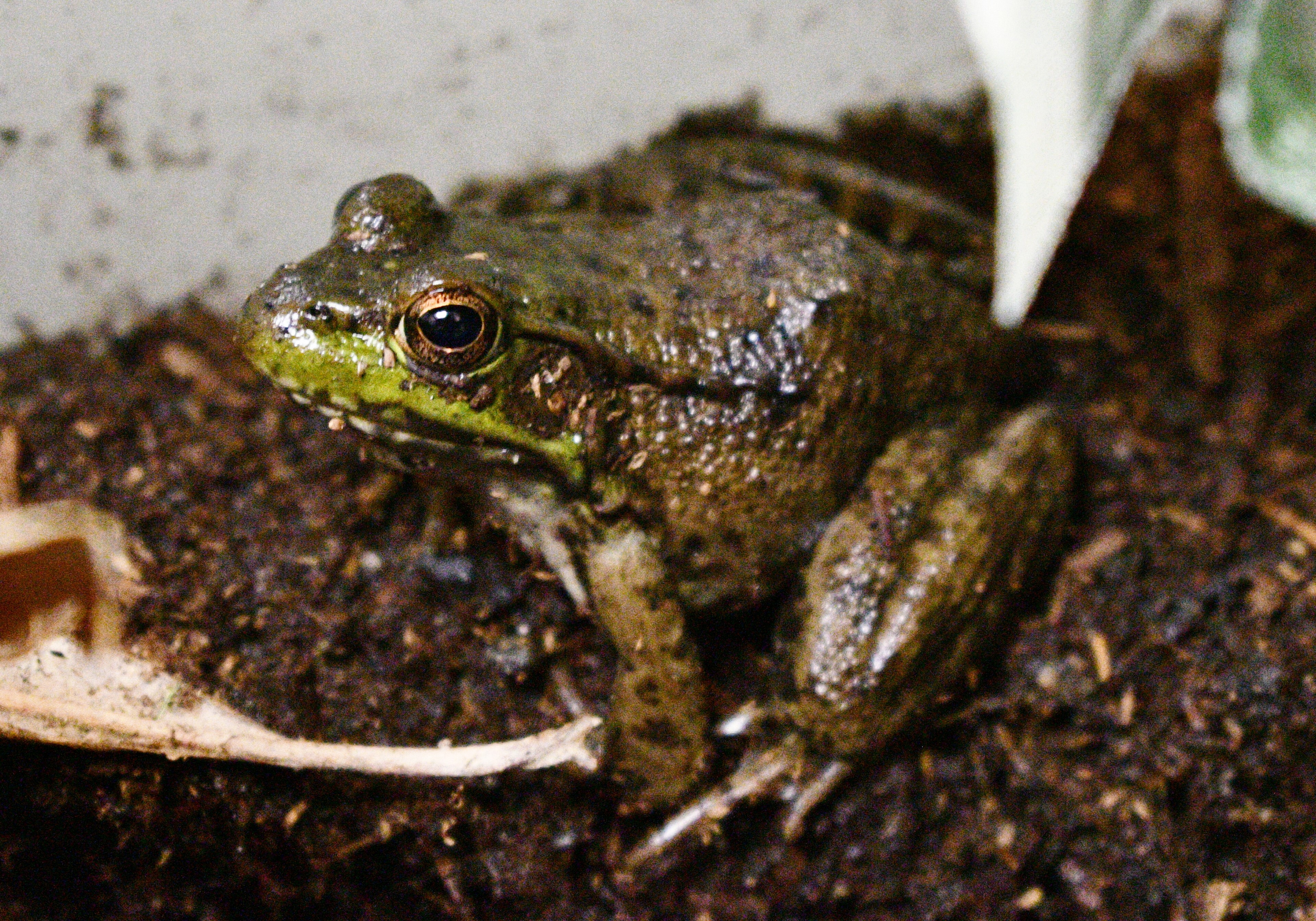
Northern Green Frog #23-2036 was one of the last patients to be admitted in 2023. This juvenile amphibian was rescued by a member of the public after it was found stranded on the ice of Lake Wingra, not moving. It is somewhat unusual to find frogs out in the open in the middle of December in Wisconsin since they would normally overwinter in the water or underneath silt and dead vegetation until spring. Being on top of the ice would put this frog in a vulnerable place for easy predation. Luckily, it was able to be saved before that could happen, and it was admitted and deemed clinically healthy.
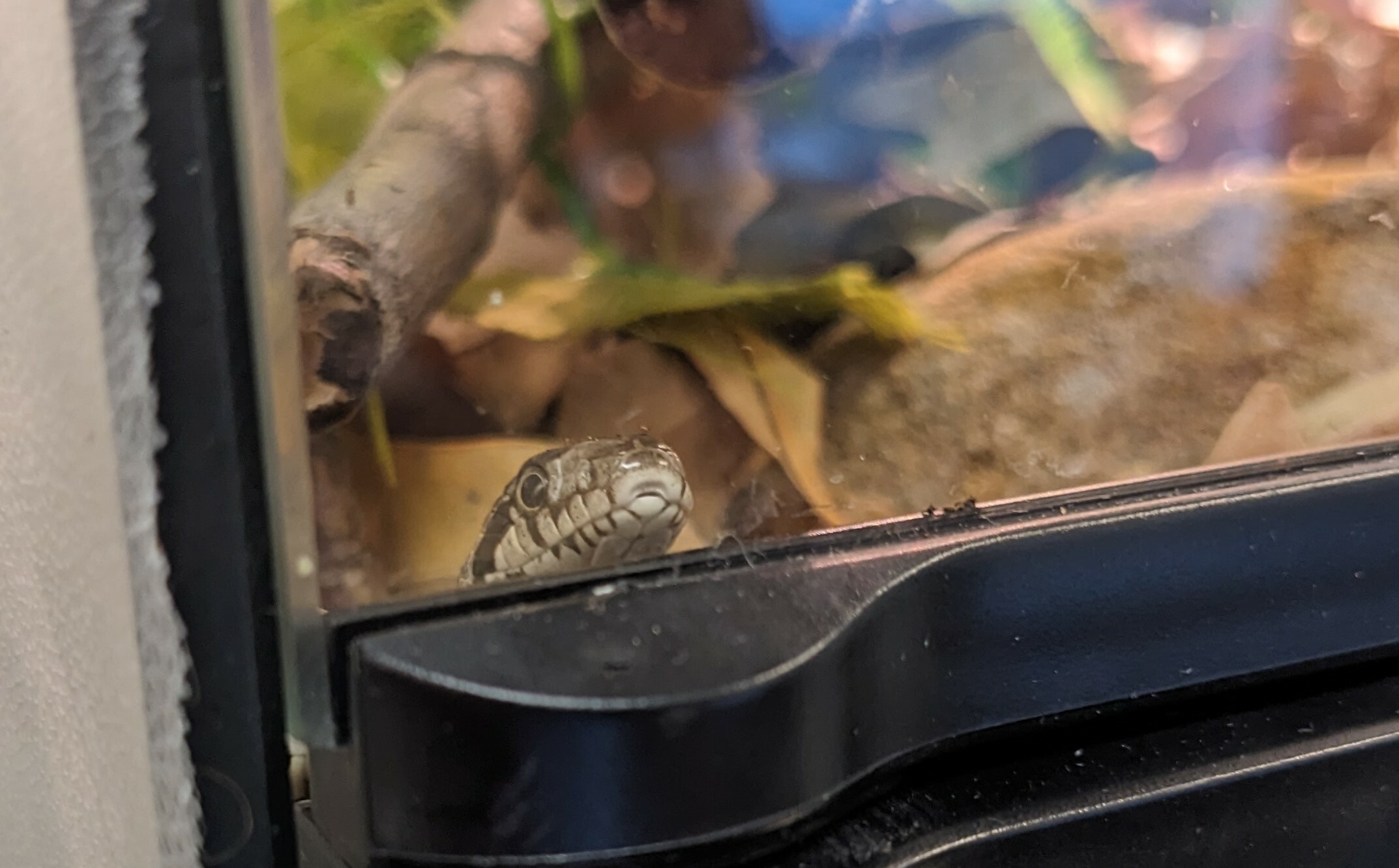
Last, but not least, is a tiny and charismatic Eastern Milk Snake, #24-0031, that was found in a pile of firewood that had been brought inside someone’s home. It was the middle of January when it was discovered, and the snake could not be returned outdoors with freezing temperatures. Instead, it was admitted to DCHS’s Wildlife Center where it could have a safe space to thrive. The best part about having this snake in care is seeing how widely it uses its environment in care. It has been found peeking its head in and out of its humidity box, sometimes tasting the air with its tongue or bringing leaf debris with it on top of its nose. Other times, it spends hours soaking in a dish of water or exploring through the substrate and cage foliage. Luckily, this snake is also healthy and can be returned to its original rescue location when weather conditions and temperatures are appropriate for its species.
